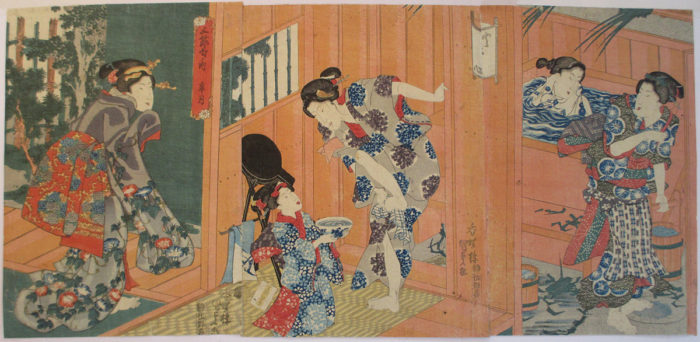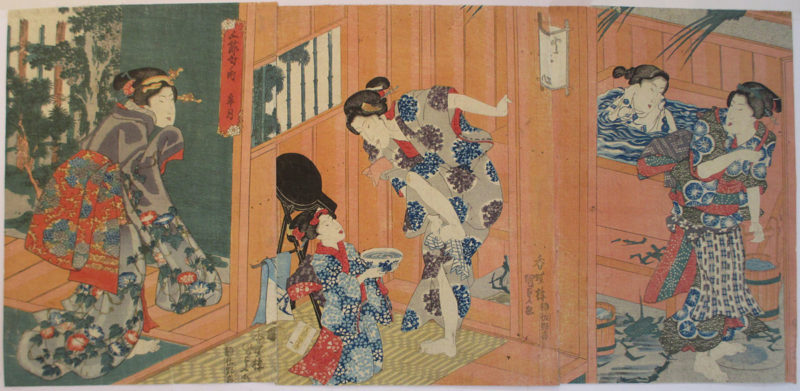There is a bathing called “Shobuyu” for the seasonal event in May.At “Tango no Sekku” on May 5, Japanese were in “Shobuyu” or iris bath for the purpose of avoiding mischief.At that time, it was said that they were praying for a disease-free by putting irises, which were considered to be herbs for evil spirits, from the eaves or in hot water.
Originally, the “root” of iris contains a lot of essential oil components that have the effect of promoting blood circulation and recovery from fatigue, so it is said that it is most effective to pack these in a net and put them in a bath.However, these days it is hard to get iris roots, so you would make iris hot springs using leaves as below.

“Shobuyu” for the purpose of avoiding trouble which is said to be an event that has continued since the Nara period(710 – 794). As the times changed to a samurai society, in Japanese “shobu” has the same pronunciation as the “game”, so which means martial arts, and the shape of the leaves resembled a sword. Since then, it has changed to a festival that honors bravery.Since the beginning of the Edo period(1603 – 1868), May 5th has been designated as an important ceremony day by the Shogunate, so daimyos have come to Edo Castle with festive gifts.
Women in Shobuyu or iris baths are depicted in Ukiyoe as below . You can see the irises falling around the bathtub and from the eaves.

Japanese painter Kiyokata Kaburaki(1878-1972)depicts a woman who has finished iris bathing , wearing a yukata and making up. Outside the window, small boats come and go across the river, and the green is beginning to darken. The woman’s skin after bath is transparent and white.
In the essay in 1934, He wrote the bathing situation.–The roots and leaves of irises are floating until the hot water cannot be seen. When the woman stands up, it looks as if the fairy appeared from the aquatic plant. Pinch the leaves on her shoulders, arms and torso and discard them in the sink. When the maid informs the visitor, she replies, “I’m finished bathing, so please wait for me ” After a while, she wears a yukata, comes into the room. There is a faint smell of makeup.

